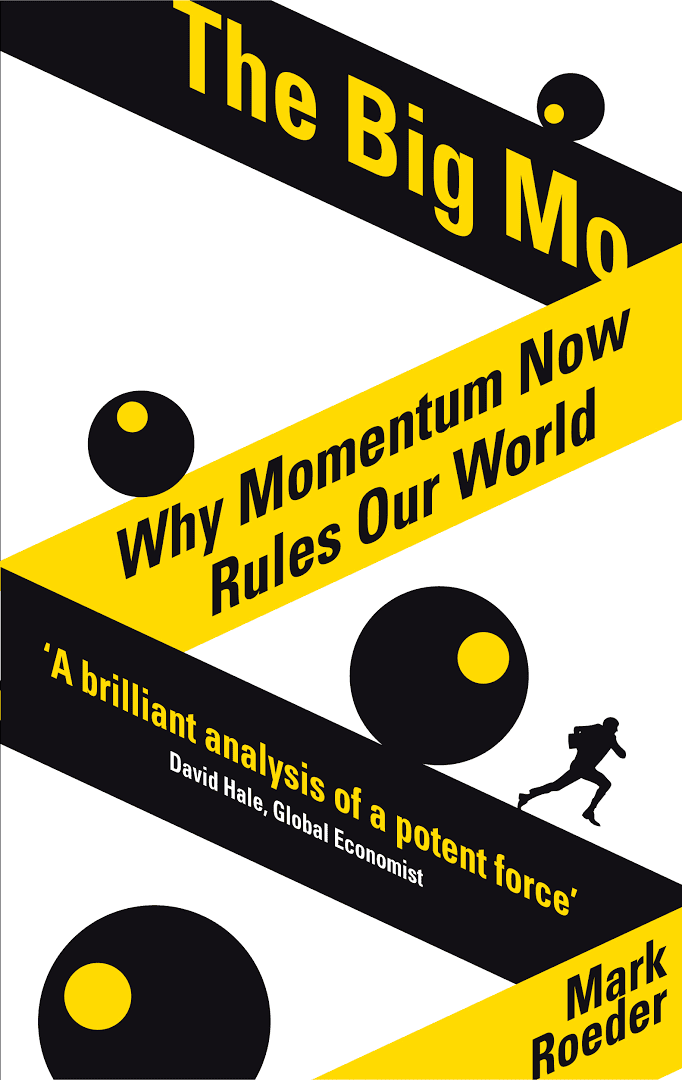8.2 /10 1 Votes8.2
Language English, Chinese Media type Print (Hardback) Originally published 2011 Page count 300 OCLC 555723 | 4.1/5 Goodreads Publication date 2011 Pages 300 ISBN 753539373 | |||||||||||||||||||||||||||||||||
 | ||||||||||||||||||||||||||||||||||
Country Australia, United Kingdom, China Publisher Virgin Books (Random House), Harper Collins | ||||||||||||||||||||||||||||||||||
The Big Mo: Why Momentum Rules Our World is a book by Mark Roeder, first published by HarperCollins in 2011 It explores the phenomenon of large-scale momentum and how it impacts society.
Contents
Overview
The book suggests that the rapid integration of digital technologies, communications and markets, has accelerated the velocity at which events unfold – and generates momentum on a massive scale (Big Mo). Roeder warns, 'As our world becomes more efficient and automated, there is less ‘friction’ to slow the momentum, which can lead to catastrophic results.’ The book examines the impact of Big Mo on finance, media, politics, wars, religion and science. Roeder, an ex-executive at UBS, bank, argues that momentum played an instrumental role in the Global Financial Crisis, and that it distorted decision-making in the lead up to the second Iraq War. He suggests that momentum ‘has become the zeitgeist of our time’
Key concepts
Reception
The Big Mo was described by the Financial Times as ‘A compelling book that journeys seamlessly from finances to the Iraq war, from oil prices and climate change to religion and pop culture in an effort to explain how we behave and why we are so easily led.’ The Australian broadcaster Phillip Adams, wrote, ‘In our personal, political and economic lives we seem to be swept along by circumstances. Our attempts to change direction are doomed. The Big Mo explains why.’
The Guardian’s Steven Poole criticized the book for 'overstretching the Newtonian-physics analogy'. Steven Matcham, writing in The Australian, said, ‘Speed and size define the events of our age. As news travels ever faster, its impact increases. The strength of [Roeder’s] book is the idea that momentum’s effects can be felt right across society, including in the media, where 15 minutes of fame is possible on a scale unimaginable a decade ago.’
The Big Mo was first published by HarperCollins Australia (2011), Random House (Virgin books) UK, Europe & USA (2011) and Xinhua Publishing House, Beijing, China (2012).
